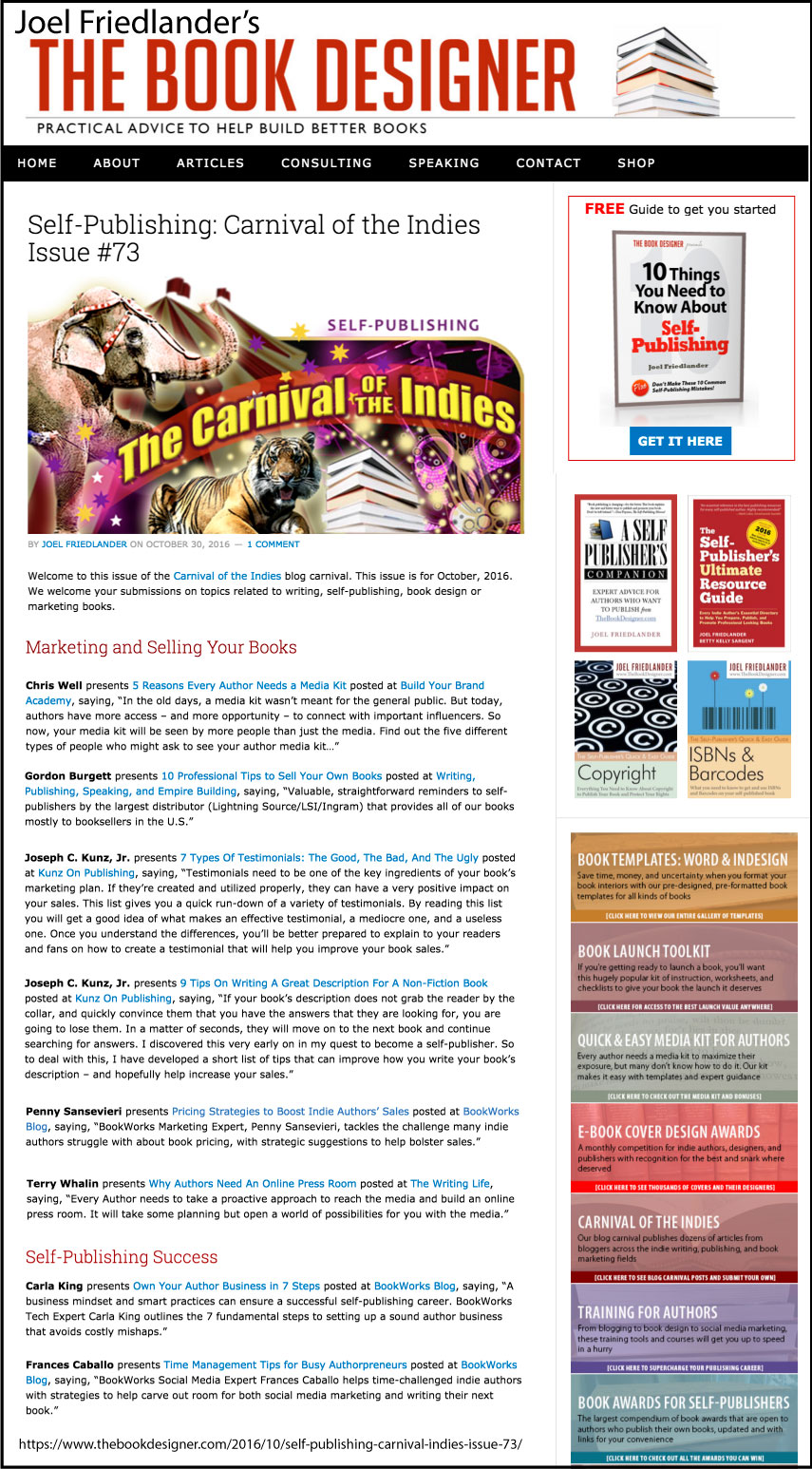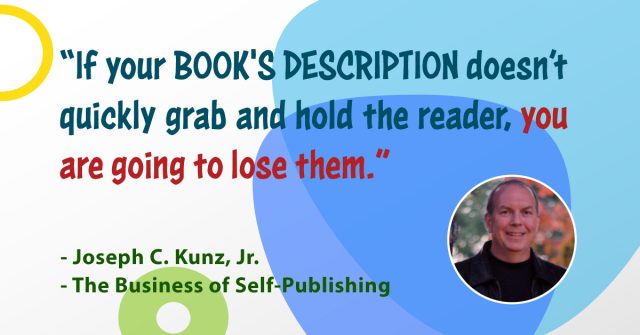Podcast: Play in new window | Download
Subscribe: Apple Podcasts | Spotify | Pandora | RSS | More
Synopsis
If your book’s description does not grab the reader by the collar, and quickly convince them that you have the answers that they are looking for, you are going to lose them. This short list of tips can improve how you write your book’s description – and increase your sales.

What You Will Learn
1. You will learn nine ways to write a better book description that will improve your sales.
2. You will learn how important it is for your book’s success to grab the reader and hold on.
3. You will learn how addressing the reader’s needs, and making an emotional connection, and sincerity, all work together to make your book’s description a powerful marketing tool.
Introduction
If your book’s description doesn’t grab the reader by the collar and quickly convince them that you have the answers that they’re looking for, you’re going to lose them. In a matter of seconds, they’ll move on to the next book and continue searching for answers. I discovered this very early on in my quest to become a successful self-publisher.
So, to deal with this, I have developed a shortlist of tips that can improve how you write your book’s description – and hopefully help increase your sales:

Tip #1. Develop an introduction that will grab the reader’s attention
You wrote your entire book for a particular audience in mind. You should already know exactly what you need to say to grab their attention. Try to grab them in the first sentence. This introduction is the hook. And once you hook them, they will be more willing to keep reading.
Tip #2. Keep it on the short side
If your book description is too long, you risk losing the reader. Get right to the point. As a general rule, you should easily be able to write a very good book description within 100 to 150 words.
Tip #3. Make an emotional connection
Making an emotional connection with the reader is essential if you expect the reader to like you and want to read more of what you have to say.
Tip #4. Don’t oversell by using insincere superlatives
All hyperbole that you use must be backed up with real proof. Without believable proof, your reader will very quickly lose all trust in you and your book. Readers can spot insincerity a mile away, and won’t tolerate it.
Tip #5. Write it in the third person, present tense
Whether you are the book’s author or publisher, you should write the book’s description in the third person and in the present tense. This will make the book description much more believable.
Tip #6. Use a quote or testimonial from a third party
Testimonials are a very powerful marketing tool, especially if it’s from a well-known or very accomplished person.
Tip #7. Explain how the reader will benefit from your book
What are the most important things the reader will learn from your book? How will the reader personally benefit from reading your book? They want specific and realistic details here.
Tip #8. How will your book help them solve their problems?
The answer to this question is crucial to getting the reader to buy your book. This answer is the main reason that the book buyer is looking at your book in the first place. You must explain in detail how your book will help them with their problems.
Tip #9. Add a short call-to-action
Subtly ask readers to buy your book, in a non-aggressive way. Ask them to visit your blog to download some free information, or ebook, or free chapter, for example, or your Amazon Author page for more information.

Conclusion
All of these tips should be very easy for you to incorporate into your book’s description. I suggest that you spend a lot of time on Amazon reading the book descriptions of books whose subject matter is similar to your book.
By doing this you’ll discover how other authors describe their own books. Read the descriptions of the books by a wide variety of authors. Compare the descriptions of the books that sell very well, against those that don’t sell well. Take notes, and start to write your own.
Questions For Us To Think About And Discuss
1. What benefits do you think your readers want to get from your book?
2. How will your book help solve your reader’s problems?

